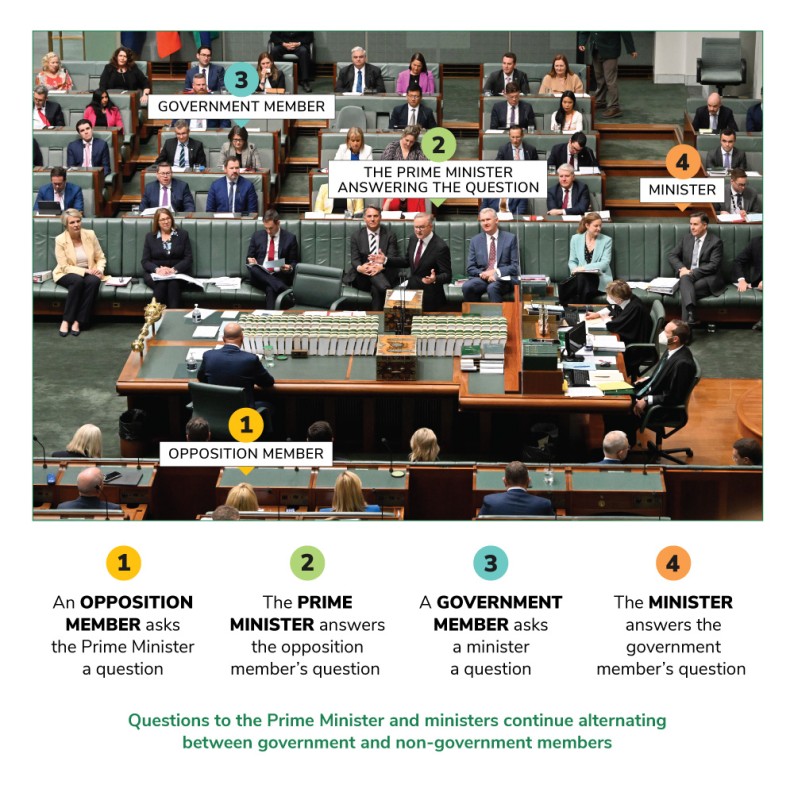What is the difference between a question without notice and a question on notice?
Questions without notice is the name given to questions which government ministers are asked during Question Time in the Senate and House of Representatives. Questions on notice are written questions that members of parliament can submit to the government. The government responds to these questions in writing.
In Question Time ministers usually have no warning about what they will be asked which is why these questions are called questions without notice. Ministers are expected to be very knowledgeable about their portfolio – area of government responsibility – and answer questions immediately. If a minister cannot answer a question, for example if asked for very detailed information, they can ask to take the question on notice.
Questions on notice can be submitted to the government at the end of Question Time and also during Senate Estimates. The government has time to research and prepare a written response to these questions. There is no set time in which questions on notice must be answered. However, if the question hasn’t been answered within 30 days (in the Senate) or 60 days (in the House of Representatives) the minister can be asked to provide an explanation for the delay.
In both cases, the questions and answers are printed in Hansard – the official written record of what is said in the Australian Parliament.

Question Time in the House of Representatives.
Parliamentary Education Office (peo.gov.au), DPS AUSPIC
Question Time in the House of Representatives.

Parliamentary Education Office (peo.gov.au), DPS AUSPIC
Description
This image shows the main people involved in Question Time in the House of Representatives. In the centre there is a T-shaped table with the Leader of the Opposition sitting opposite the Prime Minister who is standing to speak. There are tiers of seating behind the Prime Minister with members of the government seated in them. Members of the opposition sit behind the Leader of the Opposition.
This work is licensed under a Creative Commons Attribution-NonCommercial-NoDerivs 3.0 Unported License.
You are free to share – to copy, distribute and transmit the work.
Attribution – you must attribute the work in the manner specified by the author or licensor (but not in any way that suggests that they endorse you or your use of the work).
Non-commercial – you may not use this work for commercial purposes.
No derivative works – you may not alter, transform, or build upon this work.
Waiver – any of the above conditions can be waived if you get permission from the copyright holder.
